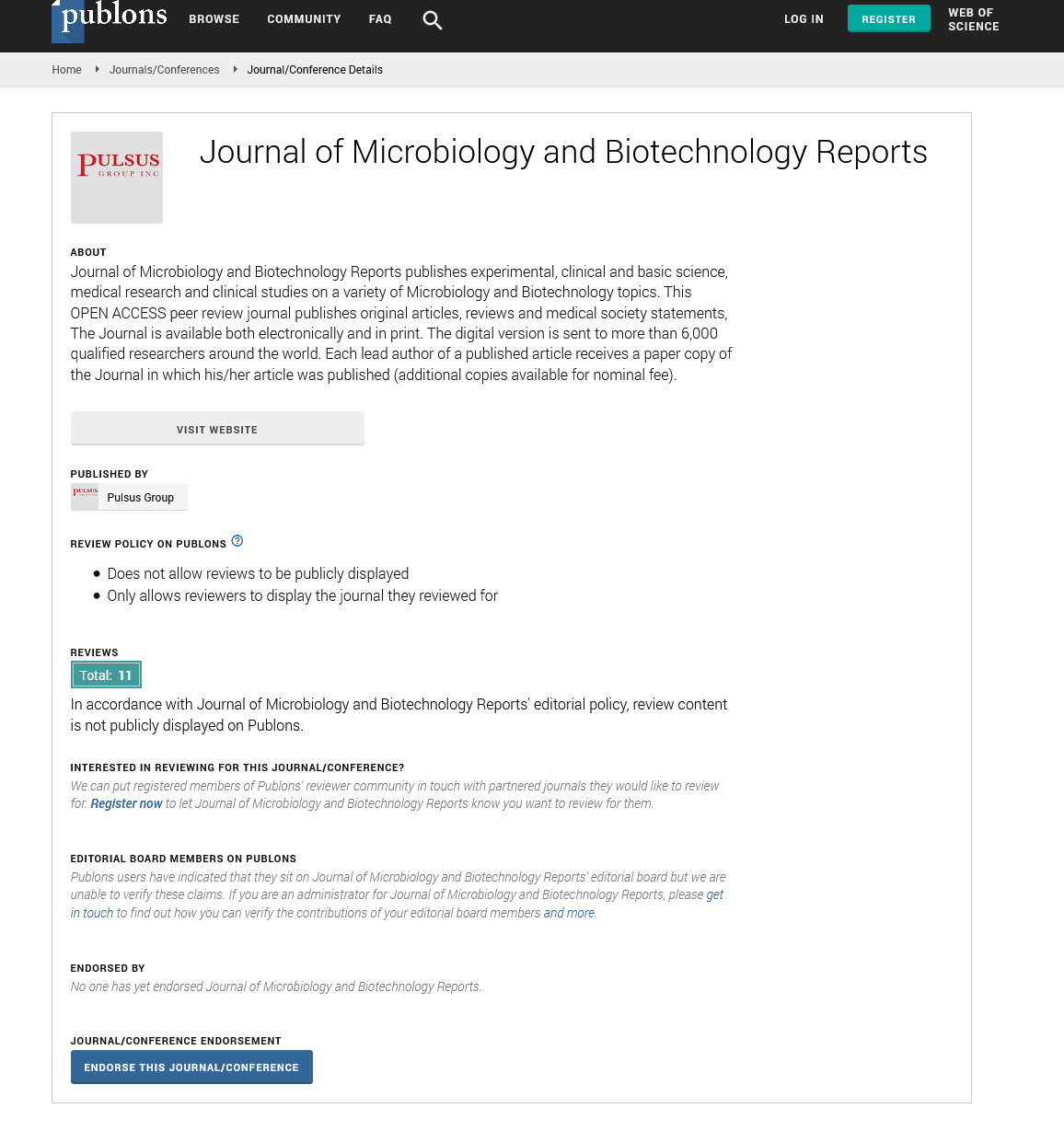Model of the Analytic Hierarchical Process for Typhoid Fever Diagnosis
Received: 05-Nov-2022, Manuscript No. PULJMBR-22- 5911; Editor assigned: 07-Nov-2022, Pre QC No. PULJMBR-22- 5911 (PQ); Accepted Date: Nov 23, 2022; Reviewed: 19-Nov-2022 QC No. PULJMBR-22- 5911 (Q); Revised: 22-Nov-2022, Manuscript No. PULJMBR-22- 5911 (R); Published: 25-Nov-2022, DOI: 10.37532/puljmbr.2022.5(6).70
Citation: Davis A. Model of the analytic hierarchical process for typhoid fever diagnosis. J Mic Bio Rep. 2022;5(6):70.
This open-access article is distributed under the terms of the Creative Commons Attribution Non-Commercial License (CC BY-NC) (http://creativecommons.org/licenses/by-nc/4.0/), which permits reuse, distribution and reproduction of the article, provided that the original work is properly cited and the reuse is restricted to noncommercial purposes. For commercial reuse, contact reprints@pulsus.com
Abstract
Despite being a worldwide health issue that often goes unnoticed, typhoid fever causes considerable levels of morbidity in many parts of the world, with roughly 12 million cases and 600,000 deaths per year. Typhoid is difficult to diagnose because of how similar its clinical symptoms are to those of many other febrile infections, including malaria, yellow fever, etc. Additionally, the majority of underdeveloped nations lack sufficient bacteriology laboratories for additional research. Although decision support systems have been shown to improve access and efficiency in the diagnosis process, the majority of current decision support models for disease diagnosis have mostly concentrated on “non-tropical” ailments. Only by engineering the practical experience of medical professionals who are experts in the care of such situations can a decision support model for the diagnosis of tropical diseases be created. In this work, we drew on the practical expertise of 25 doctors who specialize in tropical diseases to create a decision-support system based on the Analytic Hierarchy Process (AHP). Based on data from 2044 patients, the resulting model was evaluated. In 78.91% of the instances, our model correctly identified whether typhoid fever had occurred (or not), proving the value of AHP in typhoid fever diagnosis
Key Words
Typhoid fever; Diagnosis
Introduction
The World Health Organization estimates that between 11 and 21 million people worldwide are affected by typhoid fever. Additionally, it has been estimated that there are up to 161,000 related deaths per year, with a higher percentage of these deaths occurring in poor and vulnerable regions like South and South-East Asia, as well as sub-Saharan Africa. Typhoid fever presents with symptoms (such as fever, headache, exhaustion, chills, and loss of appetite) that overlap with those of other febrile infections. Without the right testing, this could result in complications and even death. The majority of poor nations are insufficiently equipped with respect to healthcare to carry out necessary laboratory testing.
One of the illnesses that contributes to the high death rate in tropical areas of the world is typhoid fever. The high death rate is brought on by misdiagnosis because of the disease’s perplexing symptoms that resemble those of other febrile illnesses. High mortality and morbidity rates are also a result of inadequate medical infrastructure and staff, as patients turn to self-medication, which exacerbates their symptoms and leads to fatalities. Typhoid fever sufferers typically struggle to communicate their feelings, which makes it challenging for a doctor to identify the underlying reason of their disease. Despite not being unique to typhoid fever, this uncertainty and imprecision has made it necessary to apply soft computing approaches for the management and processing of these uncertainties and imprecisions in medical diagnostics.
In LMICs, typhoid fever is known to have a major impact on morbidity and mortality, with inconsistent data being reported in the affected nations, particularly in South and Southeast Asia and Sub-Saharan Africa. Furthermore, despite the high degree of sensitivity and specificity of the majority of fast diagnostic tests, the assessment of disease burden appears to be limited and frequently lagged. In this study, we created an AHP model for mining experiential knowledge to power typhoid disease decision support systems.





